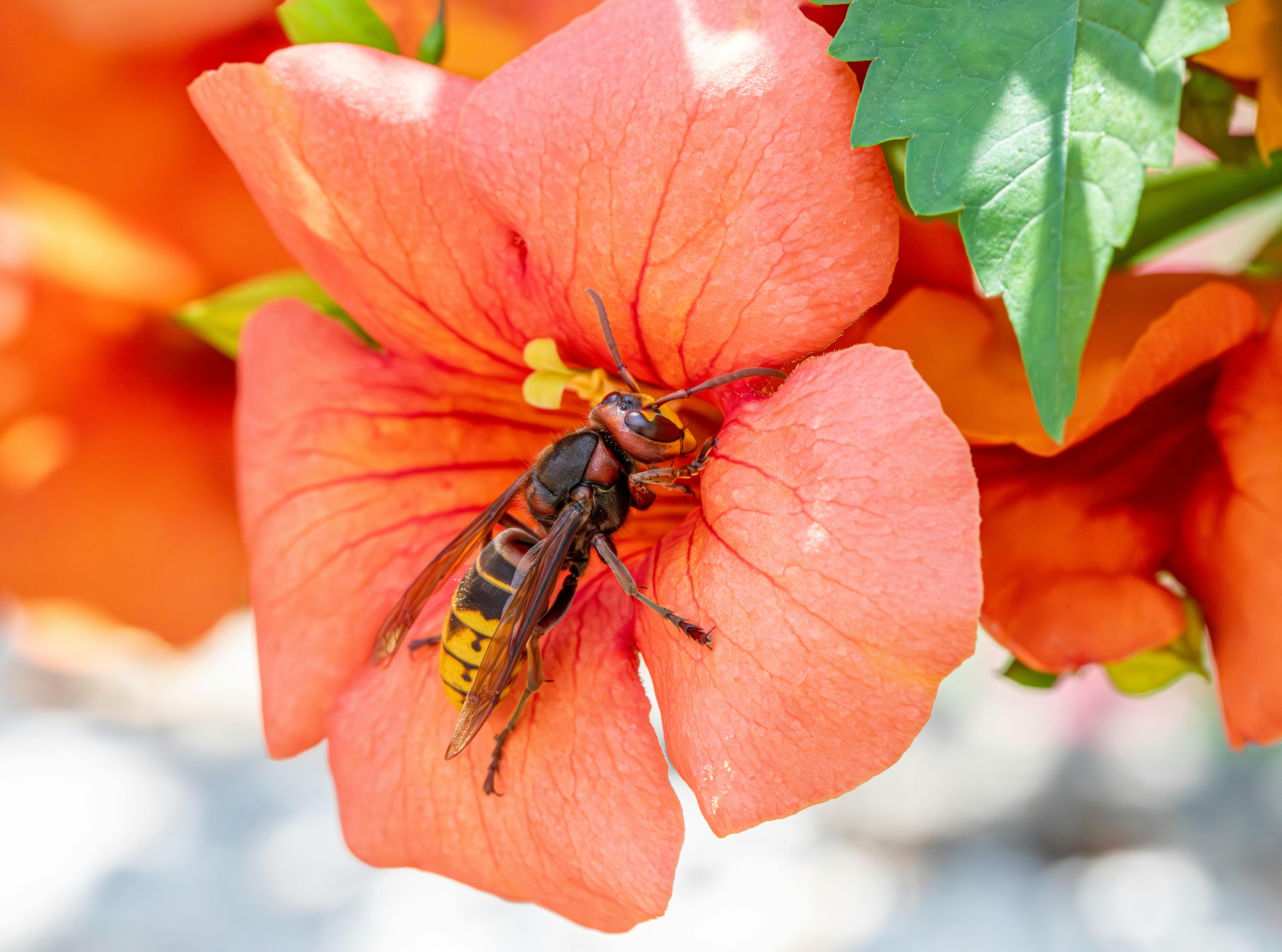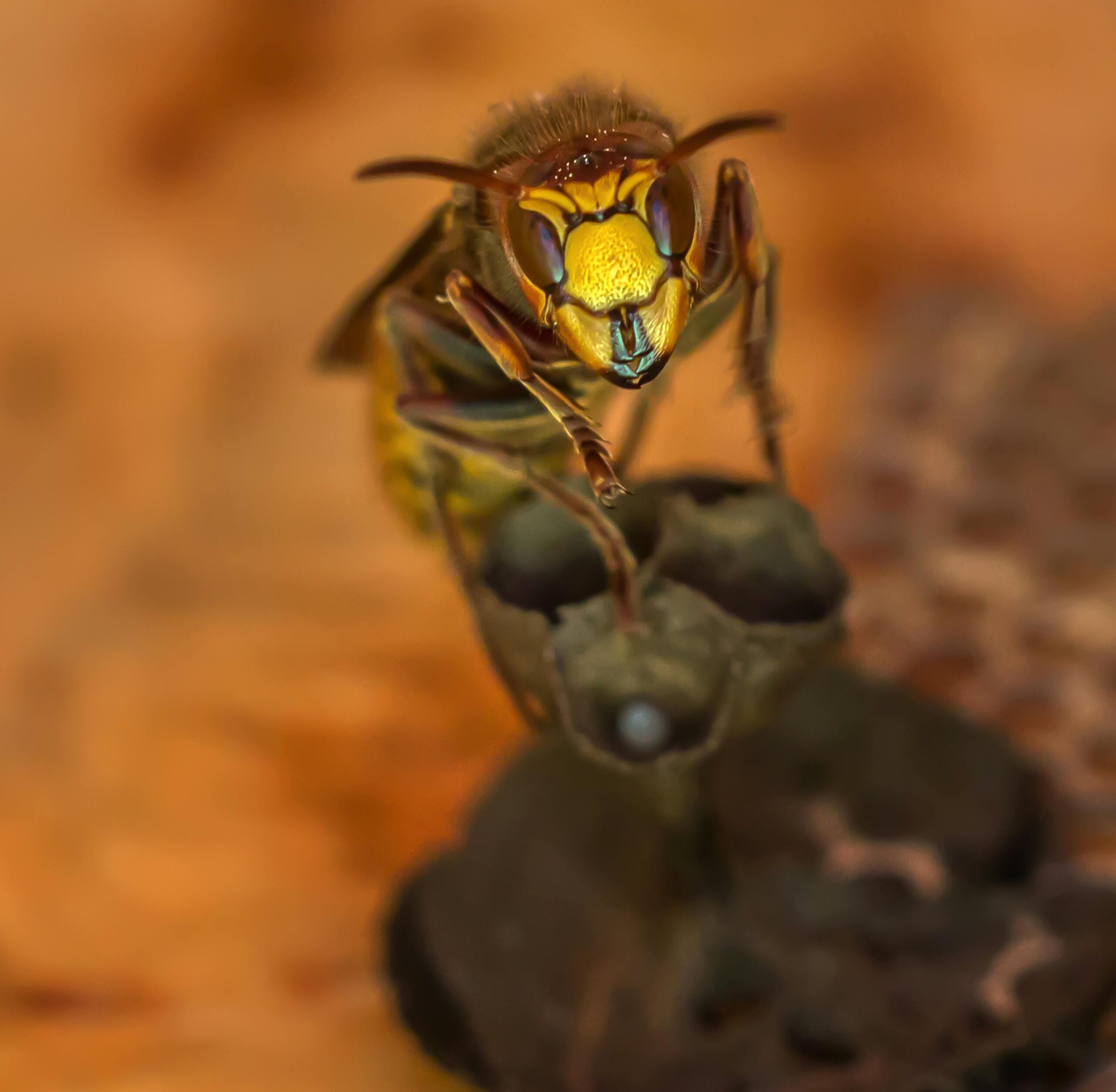Hornissennest: Understanding the Intricacies of Wasps’ Nest
What is a Hornissennest?
A **hornissennest**, or hornet’s nest, is a complex structure built by wasps, specifically hornets, for breeding and protection. These nests are made from a unique substance created by mixing chewed wood fibers with saliva, forming a paper-like material. The nests can often be found hanging from trees, building eaves, or in other sheltered areas. The structure can appear somewhat globular or teardrop-shaped, and they can vary significantly in size depending on the species and environmental conditions. Understanding the nature of these nests is crucial for anyone interacting closely with these insects—especially to avoid unnecessary risks associated with hornet stings. A typical hornissennest can house up to hundreds of hornets, usually in a multi-layered arrangement. Below, we explore the various aspects of hornets and their nests in greater detail.
Structure and Composition of Hornissennest
The basic design of a **hornissennest** typically consists of numerous hexagonal cells that serve as brood chambers for the hornet larvae. The outer layer is usually constructed to form a protective shell, which serves two primary functions: safeguarding the young inside and maintaining the internal climate. A hornissennest can be fascinating to observe, revealing the meticulous craftsmanship of the hornets. The nests are often built in shaded areas, as direct sunlight can affect the temperature stability. In some instances, the nests appear as drab grayish structures due to weathering, yet they have a remarkably robust construction that is surprisingly resilient to the elements.
Life Cycle of Hornets in a Hornissennest
Understanding the **life cycle** of hornets residing in a hornissennest provides insight into their behavior. The cycle includes four stages: egg, larva, pupa, and adult. A queen hornet initiates the nest in spring by laying eggs in the prepared cells. Once the larvae hatch, they are fed by the queen until they grow and become pupae. Following the pupal stage, adult hornets emerge to continue the cycle, with the queen laying more eggs. This process repeats until late summer when the colony reaches its peak size. As winter arrives, the life cycle shifts; the queen is the only survivor, seeking shelter to start a new nest the following spring—the others die off. Monitoring the life cycle can help in planning control methods, should they be necessary.
Why Would You Encounter a Hornissennest?
Encounters with a hornissennest often happen unexpectedly, especially when engaging in outdoor activities. Hornets tend to build their nests in quiet, undisturbed areas. Often, properties adjacent to gardens or dense shrubbery may be more prone to these nests. People tend to notice them through their unique buzzing sounds or when they inadvertently come too close. Understanding the conditions that favor the construction of a hornissennest can help individuals minimize these encounters. Maintaining a clean yard, properly managing compost heaps, and identifying locations that hornets favor can prevent nests from intruding on living spaces.
Signs of a Hornissennest
Identifying a **hornissennest** before it becomes a problem is essential for safety. Common signs to look for include an increase in wasp activity around certain areas—especially during late spring to early autumn—when hornets are most active. The nests appear as round, grayish structures, often hanging from trees or building eaves. Observing adult hornets flying to and from a nest can indicate the presence of a hornissennest nearby. Additionally, noise levels can increase around the nest, as hornets communicate with each other through buzzing. If you suspect the presence of a nest, approach with extreme caution, as hornets can become aggressive if they perceive threats to their home.
Dealing with Hornissennests Safely
When it comes to managing or removing a **hornissennest**, safety should always come first. First and foremost, wearing protective clothing is critical: long sleeves, pants, gloves, and a veil can offer protection. If the nest is small and accessible, you may consider using insecticide spray from a distance during dusk or dawn when hornets are less active. For larger nests or persistent hornet problems, hiring a professional pest control service is prudent. This helps ensure safe removal while minimizing the risk of stings. Prevention strategies include sealing entry points around your home and ensuring outdoor food waste is securely stored. Here is an example of how to safely manage a small hornissennest you might come across:
- Identify the hornissennest location with minimal disturbance.
- Gather protective gear and the necessary pest control spray.
- Approach carefully during lower activity times.
- Apply the spray according to the product instructions.
- Monitor the area for any remaining hornet activity post-application.
The Environmental Impact of Hornets
Despite being perceived as pests, hornets play a crucial role in the ecosystem. They contribute to biological diversity and help control pest populations by preying on harmful insects, including flies and caterpillars. **Hornissennests** can also serve as habitats for other species after they have been abandoned. Understanding how to coexist with hornets rather than eliminate them offers a more sustainable approach to pest management. Allowing certain nests to remain in natural spaces can benefit the surrounding ecosystem.
Benefits of Hornets
One of the primary benefits of hornets is their role as natural predators. They help manage **garden pests** and keep insect populations in check, thus promoting healthier vegetation. This symbiotic relationship with the environment highlights the importance of recognizing hornets as allies rather than just nuisances. Furthermore, after a nest is no longer active, it provides essential materials for soil regeneration as it breaks down. Such ecological contributions underscore the significance of hornets in our environment.
Hornets and Biodiversity
Hornets contribute significantly to **biodiversity** within ecosystems. With their predatory behavior, they help prevent pest species from dominating ecosystems, thus fostering a balanced environment. Education about their ecological role promotes awareness that can lead to more responsible coexistence. Adopting a mindset of conservation rather than eradication can lead to mutual benefits. By understanding their specific behavioral patterns, individuals can learn to appreciate these insects as part of the dynamic tapestry that sustains life.
Key Takeaways
- A hornissennest is a unique structure built by hornets, designed for breeding and protection.
- The life cycle of hornets within a nest is intriguing and consists of four stages.
- Encounters with hornissennests can be avoided through proper yard care and awareness.
- Understanding the environmental role of hornets allows for more sustainable pest management.
FAQ
1. What materials are used to construct a hornissennest?
A hornissennest is primarily made from a mixture of chewed wood fibers and saliva, creating a paper-like structure. This material is exceptionally durable, allowing the nest to withstand varying weather conditions. Hornets may source wood from different types of trees, which contributes to the overall resilience of the nest.
2. Are hornets aggressive toward humans?
While hornets can be defensive of their nests, they are typically not aggressive unless provoked. It is important to avoid sudden movements or threats near their nests. If left undisturbed, hornets will usually focus on securing their environment and hunting for prey.
3. Can hornets return to the same nest each season?
Hornets do not reuse nests from previous years. At the end of the season, **hornets** die off, leaving behind an abandoned nest. In the spring, a new queen hornet will begin to build a new nest, making it necessary to monitor the nesting sites each year.
4. What should I do if I find a hornissennest near my home?
If you encounter a hornissennest close to your home, it’s advisable to observe from a safe distance. Avoid any actions that may provoke the hornets. If removal is necessary, consider contacting a pest control service to ensure the nest is handled safely.
5. How can I prevent hornets from building nests around my property?
Preventing hornets from nesting around your property involves regular maintenance of outdoor areas. Secure trash bins, remove food sources, and seal potential entry points. Regularly trimming shrubs and trees can also deter hornets from finding suitable nesting sites.

